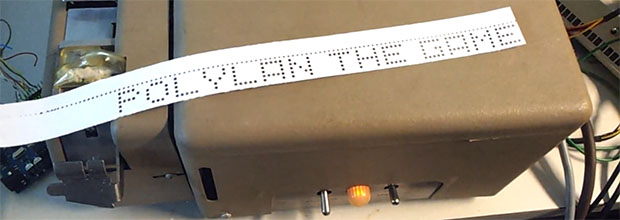
Back before the days of 8 inch floppy disks, storing computer programs was much more primitive than even a stack of punch cards. The earliest general purpose computers used paper tape, a strip of paper with punched holes designating a 0 or a 1. Thankfully for the computer scientists of the day, these paper tapes weren’t created by hand. No, the Friden SP-2 tape punch took care of the duties of punching holes in these tapes. When [Max] rescued one of these tape punch machines from a trash bin, he knew what he needed to do: connect it to an Arduino so he could create his own paper tapes.
[Max] found a veroboard with a bunch of transistors inside the machine that was added by a previous owner. After finding the manual for the machine he connected it to an Arduino, holding each of the eight control pins high to punch the tape, and then holding another pin high to advance the tape. With this, he was able to punch letters instead of binary code into his paper tape.
[Max] also added an Ethernet shield to his Arduino that checks his email. If an email shows up in a special folder, it outputs the subject line to the tape punch machine, giving him an entirely retro ticker tape machine, built with vintage 60s hardware.
There are a pair of videos of [Max]’s tape punch machine in action below, along with a gallery of the glamorous gut shots of this incredible machine.
















